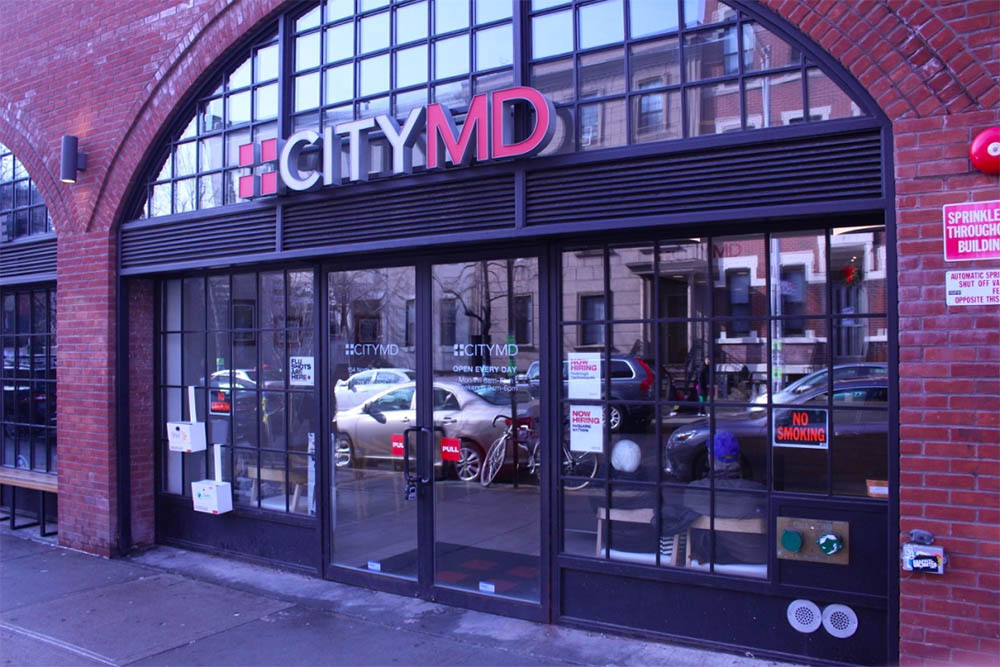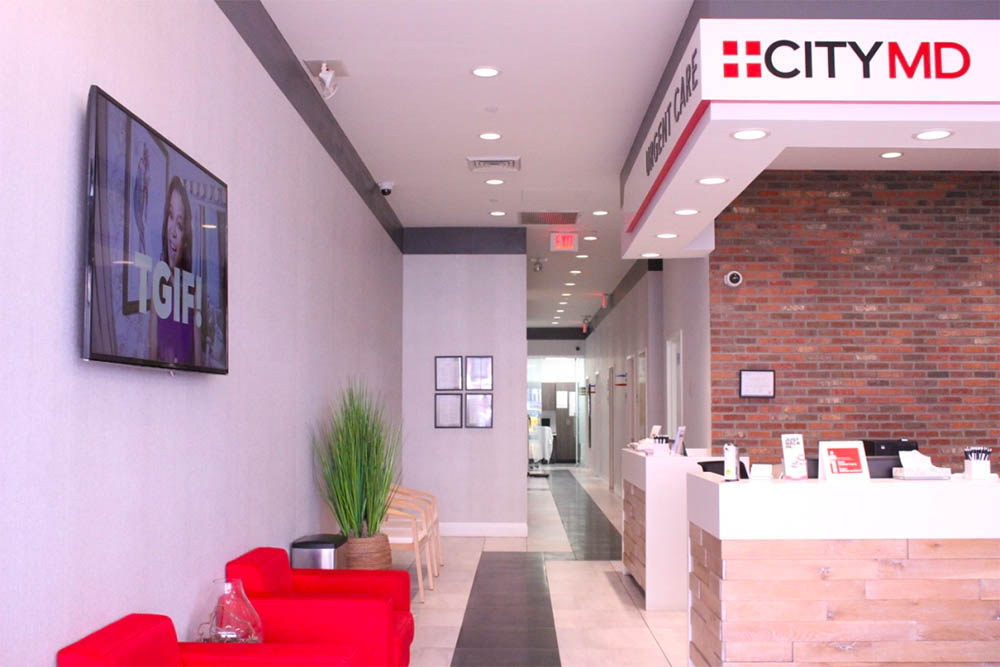Why Urgent Care Centers Are Popping Up Everywhere
Consumers like the low fees and convenience. As a business, they're cheaper to run than emergency rooms
At CityMD urgent-care clinics like this one in Williamsburg, the average waiting time is just eight miniutes, the company says (Photo credit: Patrick Smith)
The lobby of the CityMD office on North 7th Street in Williamsburg is not littered with old magazines. There is no massive line of coughing, injured people staring blankly at a slowly rotating ceiling fan. No one is complaining of an appointment 30 minutes delayed. This is not how I remember a visit to the doctor or the emergency room.
Instead, there is a sleek, modern office with iPads to check in, art from local artists on the wall and a firmly defined process from intake to treatment. The average wait at such CityMD offices, according to corporate communications manager Sabrina Valvo, is eight minutes from entry to care.
Dozens of urgent-care centers like this one have sprouted on the streets of Brooklyn, representing one of the biggest changes in the health-care industry. CityMD, a private company founded by a group of emergency physicians in 2010, now has 70 locations in the region, with 15 of those in Brooklyn and two more scheduled to open this year in Flatbush Junction and Brooklyn Heights. Urgent-care offices, including those of CityMD competitors like ProHealth and Northwell Health, have suddenly become one of the biggest renters of retail space in the city.
The Benefits for Consumers
For patients, urgent-care facilities offer an attractive new option in terms of cost and convenience. They’re designed to handle illness and injuries that are not life-threatening, but too pressing to wait for an appointment at a doctor’s office. If you have a sore throat on a Sunday, why go across the borough to the ER to get a strep test when the urgent-care clinic two blocks away can provide the same services? The average cost of a visit to urgent care is $150, compared with $1,354 for a trip to the ER, according to the Urgent Care Association of America, an industry group. The average wait time in urgent care is 30 minutes or less in 90% of cases, the group reports, vs. an average of four hours for the ER.
Demand for walk-in care has grown as hospitals have consolidated or closed, with Long Island College Hospital in Cobble Hill and Beth Israel in Manhattan among more than 15 closing in New York City since 2003. At the same time, the U.S. faces a dearth of primary-care doctors that will grow to a shortfall of 60,000 physicians by 2025, according to the Association of American Medical Colleges.

Waiting areas for urgent-care clinics are typically bright and cheery, with walk-in access from the street (Photo credit: Patrick Smith)
Enter the urgent-care center. The industry’s trade group estimates that more than 160 million people were treated at such clinics in the U.S. last year at more than 9,000 locations. Many of these offices have been opened by large health-care conglomerates like Texas-based Concentra, which owns more than 300 centers in 38 states. But smaller, regional groups like CityMD have moved quickly into the marketplace as well. “The health-care landscape is changing. And it’s adapting to our societal needs, says Dr. Franz Ritucci, a physician affiliated with the American Academy of Urgent Care Medicine.
Ritucci attributes the trend in part to the “McDonald’s Society,” in which we “want what we want when we want it,” which includes health care 24/7. One of the elements that has been historically missing from the U.S. health-care system is access to care after standard business hours, notes Dr. Miriam Laugesen, an associate professor of health and policy at Columbia University’s Mailman School of Public Health. She believes the growth of urgent care is a direct reflection of the system correcting itself as it evolves.
The Effect on Emergency Rooms
Emergency-room staffers welcome the change, since it helps reduce the chronic overcrowding of ER facilities. “Urgent-care centers are a great alternative to the ER for medical conditions which require urgent attention but are not life threatening or do not need advanced testing or imaging,” says Michael Kennedy, a resident MD in a busy Chicago emergency room. Many urgent-care clinics have X-ray machines, for example, so a child with a suspected broken finger on the weekend can get a scan to confirm the diagnosis, then follow up with a specialist later.
Since urgent-care clinics are smaller and provide fewer services than a traditional ER, the have less overhead and can charge lower fees. And unlike an ER, they aren’t required by law to provide treatment to anyone who comes in regardless of whether they can pay. Covering the costs of the uninsured is one of the pressures that push ER fees so high.
That situation has been part of the inspiration for traditional hospitals to team up with urgent-care clinics to get the right level of treatment to patients at the right time. Mount Sinai, the Manhattan hospital giant, partnered with insurance startup Oscar to open the Oscar Center in downtown Brooklyn late last year. The spacious, calming facility offers not just urgent care but also primary care and wellness programs like yoga, prenatal classes and mindfulness training.
While an operation like CityMD does not have exclusive partnerships with any given hospital, the clinics work in conjunction with their patients’ primary-care doctors as well as the patients themselves to schedule follow-up care. “We are here to be accessible when a PCP isn’t available, or if a patient doesn’t have a PCP,” says Dr. Nedal Shami, CityMD’s chief strategy officer.
Are even more urgent-care clinics on the way? Investors have poured money into such ventures, with private-equity firms investing more than $2.3 billion in 2008-2014, according to the New York Times. However, urgent care is a low-margin business, dependent on high volume be profitable. Their survival will be on quick patient turn-around and operational efficiency. “Yes, it’s medicine, but it is also a business,” says Ritucci, the urgent-care physician. “So you look for ways to streamline the business, to make it the most efficient model out there.”













